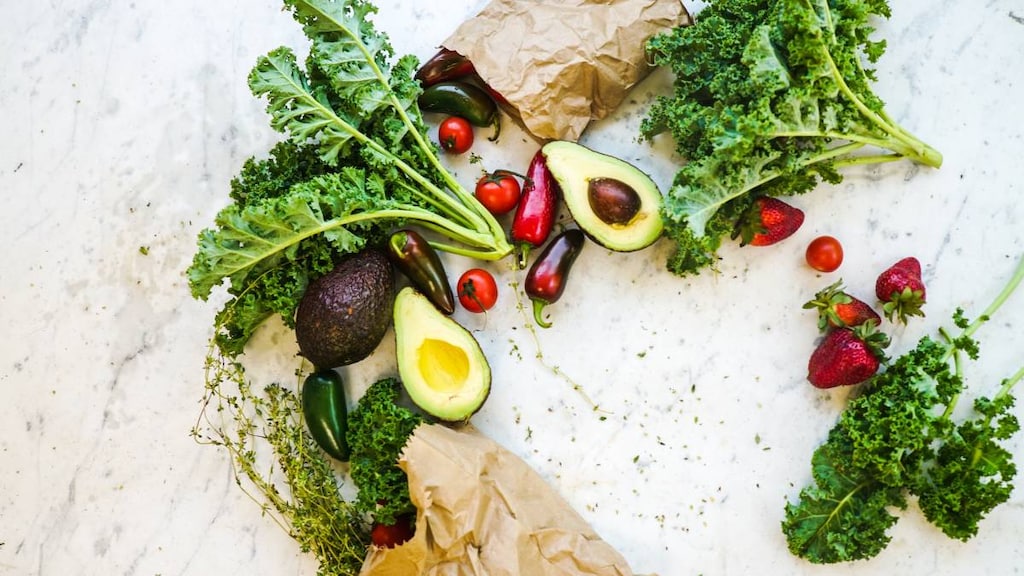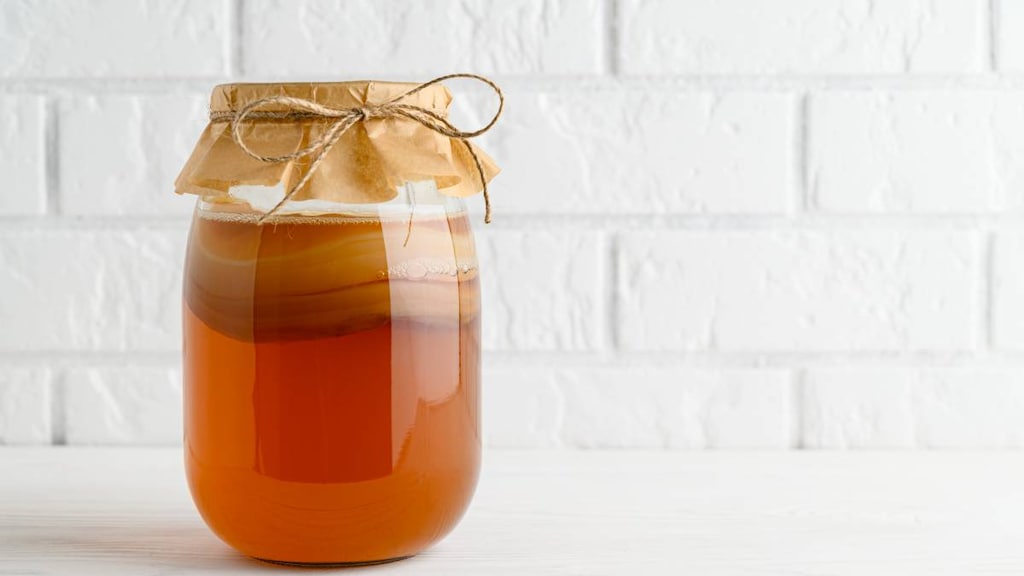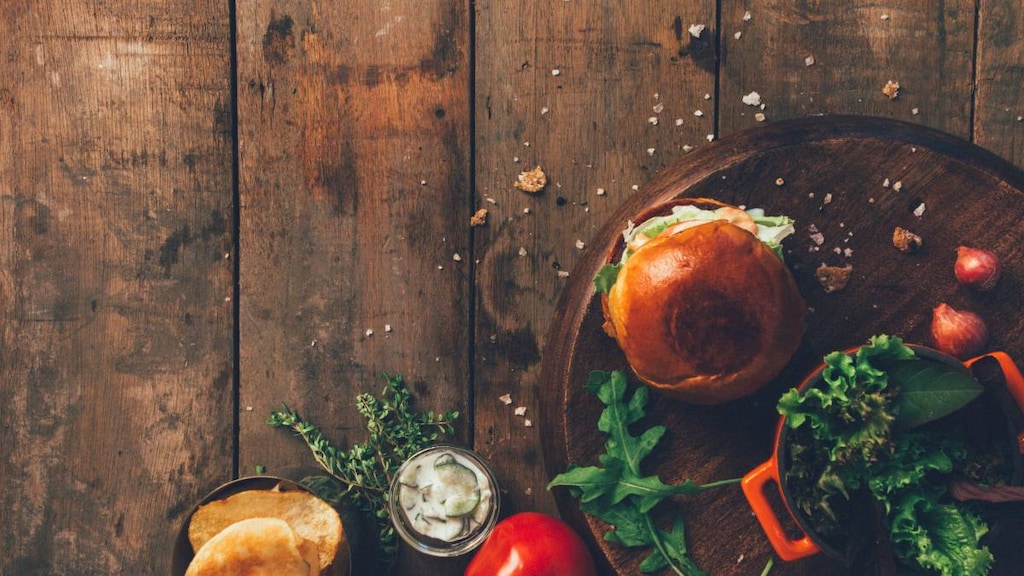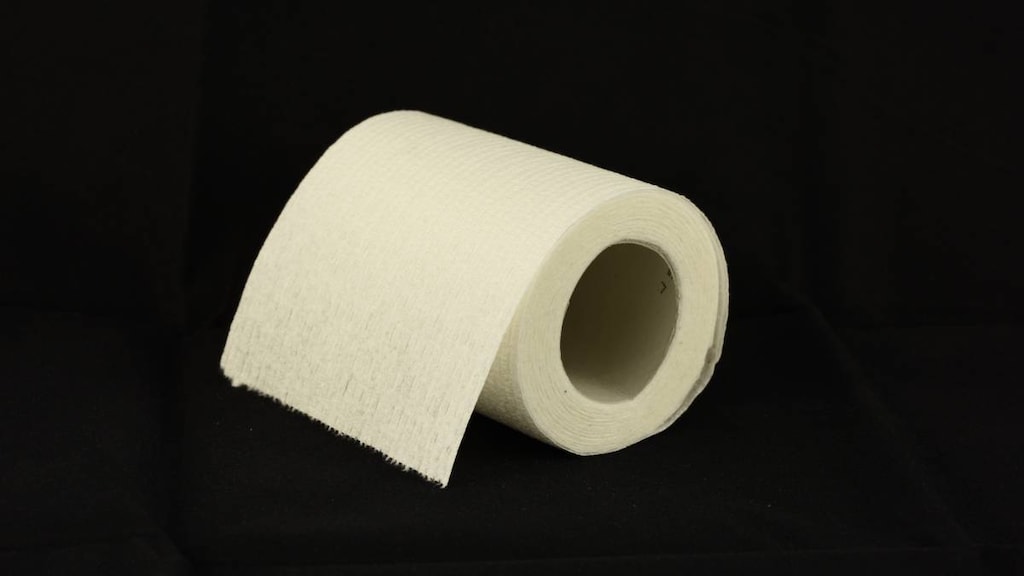IBS diet guide: Foods to eat and foods to avoid


Irritable bowel syndrome (IBS) is a common gastrointestinal disorder that affects the digestive system, including the small and large intestine (bowel). People who have been diagnosed with IBS often find that what they eat makes a difference to their IBS symptoms and how they feel.
IBS symptoms can come and go and last for days, weeks or even months. The most common symptoms of IBS are:
- Bloating
- Abdominal pain
- Cramping
- Gas
- Diarrhea
- Constipation
Following a healthy diet for irritable bowel syndrome can help manage your symptoms. Certain foods can trigger IBS symptoms, so identifying these foods and limiting or avoiding them can help to keep symptoms at bay. Following a low FODMAP diet, or diet low in fermentable oligosaccharides, disaccharides, monosaccharides, and polyols (short-chain carbohydrates (sugars) found in some foods) can be helpful for many people with IBS.
In this article, we’ll review foods to avoid for IBS and best foods for IBS that can be eaten as part of a balanced diet for irritable bowel syndrome. We’ll also go over what a low fodmap diet is and provide a low fodmap food list.
Foods to avoid with IBS
If you are living with IBS, you may have wondered, “What are the worst foods for IBS?” There are some beverages and foods that trigger IBS because they are more likely to bring on IBS symptoms. IBS triggers aren’t the same for everyone,, but if they do make your symptoms worse then it is best to limit or avoid them. Below is a chart that includes drinks and foods that trigger IBS for some people.
Foods and drinks to limit or avoid
|
Insoluble (cereal) fiber |
Insoluble fiber is likely to cause problems for many people with IBS and it may need to be limited. That said, if you have IBS with constipation (IBS-C) eating larger amounts of high-fiber food may help reduce your symptoms of constipation. Examples of foods containing insoluble fiber include:
|
|
Caffeine |
Caffeine is found in coffee, chocolate, some teas and soda drinks. It can cause cramping and diarrhea. Instead, choose non-caffeinated beverages like water or herbal tea. |
|
Chocolate |
Chocolate can trigger cramping and diarrhea symptoms. Replace chocolate with healthier desserts, like fresh or frozen blueberries. |
|
High fat, fried or oily foods, or food with a lot of sauce |
High fat meals can cause cramping and diarrhea. Avoid onion rings, fried chicken and fatty cuts of meat or fish. Have your sauce on the side so that you can control your portion. |
|
Alcohol |
Alcohol may cause cramping and diarrhea. It’s best to avoid alcohol and choose non-alcoholic beverages instead. |
|
Carbonated beverages |
Limit or avoid carbonated beverages, such as soda, because they can make you feel bloated and cause gas. Opt for non-carbonated water as an alternative. |
|
Certain vegetables and fruits, including nuts and legumes |
Apples, pears, beans, broccoli, cabbage, cauliflower, lentils, brussels sprouts, garlic, onions, raisins and legumes like peas, peanuts, soybeans can all contribute to feelings of bloating and gas. These foods are high in carbohydrates that are thought to contribute to IBS symptoms. |
|
Sorbitol and fructose (types of sugar) |
Too much of these sugars can cause cramping and diarrhea. Sorbitol is found in gum and candies, and is used as a sweetener in dietetic foods. Fructose is found in honey and some fruits, and is also used as a sweetener. |
|
Dairy products |
The lactose in dairy products, such as cows milk, ice-cream and cheese, can cause bloating and gas in some people. Replace dairy products with lactose-free alternatives, or plant-based options such as almond milk. |
|
Spicy foods |
Low or mild spice in a meal can be tolerated by some people, but foods that are too spicy can exacerbate IBS symptoms. Try using more herbs to flavor your meal. |
|
Processed meats |
Sausages, deli meat and anything that may have additives like dehydrated onion and vegetable powders may cause cramping or bloating. Cook meals with whole foods, such as chicken breasts, instead of processed meats. |
|
Gluten |
Some people may find eating a low gluten or gluten-free diet helps their IBS symptoms. Avoid products containing wheat, barley, rye and in some cases oats to go gluten-free. This includes food such as bread, pasta and cereals. |
Foods to eat for an IBS diet
Some foods are less likely to be IBS triggers. Even with IBS, it’s important to maintain a healthy, well-balanced diet that includes foods from all of the food groups.. The foods listed below may be included in a diet for irritable bowel syndrome and can help manage your IBS symptoms.
Foods to eat
|
Poultry |
Lean chicken or turkey are great sources of protein and are low in fat. Grill, broil or steam in little or no oil. |
|
Red meat |
Small amounts of lean red meat provide protein. Grill or broil in little or no oil when cooking. |
|
Fish |
Fish can be a great source of calcium and vitamins. Examples of suitable fish are cod, haddock, plaice, salmon, trout, tuna - fresh and canned. Grill, broil or steam in little or no oil. |
|
Vegetables |
Cooked vegetables are easier to digest than raw. The majority of vegetables are fine to eat with the exception of those listed above. Some examples of vegetables that are good to eat if you have IBS are:
|
|
Fruits |
Fruits that are low in fructose are easier on the stomach for those with IBS. Some examples of fruits that are lower in fructose include:
|
|
Herbs |
Herbs can be used to enhance a meal. Some examples include: basil, cilantro, parsley, ginger, mint and oregano. |
|
Grains |
Oatmeal (processed in a gluten-free environment) and brown rice are good sources of soluble fiberfibre that can help regulate bowel movements. Other rices, polenta, millet, quinoa and tapioca are also options. |
|
Dairy products |
If you find dairy products make your IBS symptoms worse try lactose-free milk or alternative milk products like oat milk, rice milk or almond milk. Lactose-free or low-fat yogurt is a good source of probiotics. Use olive oil instead of butter. |
|
Eggs |
Eggs are an excellent source of protein and are easily digestible. If fat is a trigger for you then just consume the egg whites. |
What is a Low FODMAP diet?
Some people with IBS benefit from eating a diet low in fermentable oligosaccharides, disaccharides, monosaccharides and polyols (FODMAPs). This is known as a low FODMAP diet. FODMAPs are a group of short-chain carbohydrates and sugar alcohols. FODMAPs are poorly absorbed by the small intestines. When they reach the colon, bacteria ferment these sugars and create gas. This can cause IBS symptoms such as bloating and cramping in some people.
FODMAP stands for:
- Fermentable. The process in which these sugars are broken down by the bowel.
- Oligosaccharides - fructans (found in wheat, onions, garlic) and galactans (found in beans and lentil) for example.
- Disaccharides - lactose (found in dairy products such as cows milk, yogurt, ice cream, cottage and ricotta cheeses) for example.
- Monosaccharides - fructose (found in some fruits like apples, honey, and products with high fructose corn syrup) for example.
- And
- Polyols - sorbitol and mannitol ((found in some fruits and vegetables, and artificial sweeteners used in sugar-free gum, mints and confectionery) for example.
The low-FODMAP diet is used temporarily to eliminate foods that are causing IBS symptoms and work out which foods are causing them. It has three phases - elimination, reintroduction and personalization.
- Phase 1 (elimination): During the elimination phase of the low FODMAP diet, all FODMAPs are removed from the diet. This phase typically lasts 2-4 weeks, but can take up to 6 weeks for some people.. Make sure to continue eating a well-balanced diet by incorporating foods that are acceptable to eat on a low FODMAP diet. Once symptoms are under control, then to phase 2.
- Phase 2 (reintroduction): During the reintroduction phase, some FODMAPs are slowly added back into the diet one at a time. Select foods from each high-FODMAP group, and try one FODMAP at a time in one food at a time over 3 days. Keep a track of how you're feeling as you reintroduce each food in a food diary. This phase can last for 8-12 weeks.
- Phase 3 (personalization): The final phase of the low FODMAP diet is personalization. Your healthcare provider will work together with you to review which FODMAPs cause IBS symptoms and which you can eat or drink without issues. This will help you create a long-term diet plan that manages your IBS symptoms.
What foods to avoid on a low FODMAP diet?
Below is a list of food that should be avoided during the elimination phase of a low FODMAP diet according to experts at Monash University, the American College of Gastroenterology, and the National Institute of Diabetes and Digestive and Kidney Diseases.
FODMAP-rich foods to avoid:
|
Food groups |
Examples |
|
Vegetables |
Onions, garlic, cabbage, cauliflower, mushrooms, spring onions, sugar peas, artichokes, asparagus, leek |
|
Fruits |
Apples, pears, peach, mango, watermelon, dried fruits, apricot, nectarine, plum, lychee, blackberries, cherries |
|
Legumes and Beans |
Lentils, beans (chickpeas, red kidney beans) |
|
Dairy products |
Cows milk, yogurt, custard, cream, ice-cream, cheese, soy milk made from whole soy beans |
|
Grains |
Wheat, barley, rye, pasta, couscous, biscuits, cakes, bread, cereals |
|
Sweeteners containing fructose |
Corn syrup, honey, agave nectar, man-made sweeteners, fruit juice, canned fruit |
|
Sweeteners containing sorbitol, mannitol, xylitol, isomalt, maltitol, polyols and other sweeteners with names ending in “ol” |
Sugarless gum and candy, some artificial sweeteners and some medications |
What foods are ok to eat while on a low FODMAP diet?
Below is a low FODMAP food chart. It includes a list of foods that can be eaten on a low FODMAP diet. These foods are considered low fodmap foods and shouldn’t flare up your IBS symptoms. Choose a variety of these foods to eat during the elimination phase of the low FODMAP diet as alternatives to foods above that you should avoid.
Low FODMAP foods:
|
Food groups |
Examples |
|
Vegetables |
Bok choy, eggplant, carrots, cucumber, tomato, kale, olives, radish, spinach, lettuce, potato, zucchini |
|
Fruits |
Kiwi, blueberries, strawberries, orange, banana, grapes, lemon, lime, papaya, pineapple |
|
Protein sources |
Beef, chicken, seafood, egg, pork, turkey, tofu, tempeh |
|
Dairy-alternatives |
Almond milk, feta cheese, hard cheeses (e.g., Parmesan), lactose-free milk or ice cream, coconut yogurt |
|
Grains |
Corn tortillas, gluten-free oats, quinoa, rice, gluten-free pasta |
|
Sweeteners |
Maple syrup, table sugar |
What is an example of a low FODMAP meal plan?
Set aside some time to come up with a low FODMAP meal plan that includes low fodmap recipes to reduce the stress of coming up with meals on the fly. Try planning your meals for the following day, few days, or week ahead. Here is one example of an entire-day meal plan to get you started:
- Low FODMAP breakfast: Scrambled eggs with spinach and feta cheese, coconut yogurt with blueberries
- Low FODMAP lunch: Taco salad (lettuce, tomatoes, corn, shredded chicken, tortilla chips, lime vinaigrette)
- Low FODMAP dinner: Baked sweet potato, grilled rosemary salmon, sauteed garlic kale
- Low FODMAP snacks: Rice cakes with peanut butter, sliced oranges, baby carrots
Tips for managing IBS symptoms
Managing IBS symptoms can be challenging at times. Certain lifestyle and dietary changes, as well as medications, can help you get your symptoms under control.
Lifestyle and dietary tips
- Keep a food diary of all the foods you eat and how they make you feel. This will help you to identify your trigger foods
- If you’re on a low FODMAP diet, bring your fodmaps food list with you to the grocery store.
- Cook all vegetables before eating them. This will help your body digest them easier
- Grill, broil, bake or steam food with little or no oil. Try using a cooking spray instead of oil
- Drink plenty of water during the day to stay hydrated
- Keep meals small and eat three meals with two to three snacks daily. Eating at the same time every day will also help keep your bowels regular
- When eating out, choose foods that are similar to what you eat at home. Ask for sauces or dressing on the side and don’t overeat
- Limit alcohol and carbonated beverages that have bubbles (gas)
- Maintain a regular exercise routine
- Reduce stress through techniques such as yoga, meditation, and deep breathing
- Consult your healthcare provider if you think you may have IBS or are concerned about your symptoms
- Seek help from a nutritionist to plan a diet that is right for you
Medications and supplements
- Some people find that an increase in soluble fiber (e.g., nuts, seeds, psyllium, some fruit and vegetables) is beneficial, particularly those that mainly suffer from IBS with constipation (IBS-C). Introduce and increase the fiber slowly to minimize discomfort from gas and cramping. Also, make sure to drink plenty of water.
- Over-the-counter laxatives can help relieve constipation due to IBS-C.
- For people with IBS with diarrhea (IBS-D), over-the-counter medications like loperamide can help manage diarrhea. Your healthcare provider may also prescribe a stronger antidiarrheal called diphenoxylate / atropine.
- Healthcare providers may prescribe antispasmodic medications, such as dicyclomine, to help with cramping.
- Probiotics have proven benefits for IBS. Ask your healthcare provider to help you select probiotics that are best for you.
Interactive tools and resources
There are many tools and resources available to help you manage IBS. At home, simply using a notebook as a food diary to keep track of what foods you are eating and how you feel after each meal can be helpful in identifying IBS trigger foods. You can also keep track of your meals in an app on your smart device. Ask your healthcare provider about local support groups and resources available to you.
Below is a list of resources with helpful information about managing IBS:
- IBS Patient Support Group
- Monash University
- National Institute of Diabetes and Digestive and Kidney Diseases
Article references
- Southern Cross. Irritable bowel syndrome - symptoms and treatment. September, 2020. Available at: https://www.southerncross.co.nz/group/medical-library/irritable-bowel-syndrome-symptoms-and-treatment. [Accessed February 25, 2021].
- International Foundation for Gastrointestinal Disorders (IFFGD). IBS Diet. January 12, 2017. Available at: https://www.aboutibs.org/ibs-diet.html. [Accessed February 25, 2021].
- International Foundation for Gastrointestinal Disorders (IFFGD). IBS Diet: Cramping and Diarrhea. June 14, 2016. Available at: https://www.aboutibs.org/ibs-diet/cramping-and-diarrhea.html. [Accessed February 25, 2021].
- International Foundation for Gastrointestinal Disorders (IFFGD). Gas and Bloating. June 14, 2016. Available at: https://www.aboutibs.org/ibs-diet/foods-that-cause-gas-and-bloating.html [Accessed February 25, 2021].
- GI Society, Canadian Society of Intestinal Research. Irritable Bowel Syndrome (IBS) and Diet: The Foods You Can Eat. Available at: https://badgut.org/information-centre/health-nutrition/ibs-the-foods-you-can-eat. [Accessed February 25, 2021].
- GI Society, Canadian Society of Intestinal Research. Relief of Irritable Bowel Syndrome (IBS) Symptoms with a Low FODMAP Diet. Available at: https://badgut.org/information-centre/health-nutrition/low-fodmap-diet/. [Accessed February 25, 2021].
- National Institute of Diabetes and Digestive and Kidney Diseases (NIDDK). Eating, Diet, & Nutrition for Irritable Bowel Syndrome. How can my diet help treat the symptoms of IBS?. November 2017. Available at: https://www.niddk.nih.gov/health-information/digestive-diseases/irritable-bowel-syndrome/eating-diet-nutrition. [Accessed February 25, 2021].
- NZ Nutrition Foundation. Fibre. May 8, 2018. Available at: https://nutritionfoundation.org.nz/nutrition-facts/nutrients/carbohydrates/fibre. [Accessed February 25, 2021].
- Franciscan Health. The best IBS diet to prevent flare-ups. September 25, 2018. Available at: https://www.franciscanhealth.org/community/blog/best-ibs-diet-prevent-flare-ups [Accessed February 25, 2021].
- Staudacher HM, Whelan K. The low FODMAP diet: recent advances in understanding its mechanisms and efficacy in IBS. Gut. 2017;66(8):1517-1527. doi:10.1136/gutjnl-2017-313750.
- Altobelli E, Del Negro V, Angeletti PM, Latella G. Low-FODMAP Diet Improves Irritable Bowel Syndrome Symptoms: A Meta-Analysis. Nutrients. 2017;9(9):940. Published 2017 Aug 26. doi:10.3390/nu9090940.
- American Gastroenterological Association (AGA). Low-FODMAP diet. Starting. Available at: https://gastro.org/practice-guidance/gi-patient-center/topic/low-fodmap-diet/. [Accessed February 25, 2021].
- GI Associates. Low FODMAP diet. Available at: https://www.giassoc.org/docs/FODMAP%20Diet%202-14-1.pdf. [Accessed February 25, 2021]
- Cleveland Clinic. The best and worst foods for IBS. December 4, 2019. Available at: https://health.clevelandclinic.org/take-control-of-ibs-with-low-fodmap-diet/. [Accessed February 25, 2021]
- El-Salhy M, Hatlebakk JG, Hausken T. Diet in Irritable Bowel Syndrome (IBS): Interaction with Gut Microbiota and Gut Hormones. Nutrients. 2019;11(8):1824. Published 2019 Aug 7. doi:10.3390/nu11081824.
- American College of Gastroenterology. (2021). Low-FODMAP (Fermentable, Oligo-, Di-, Mono-saccharides And Polyols) Diet: Overview. Accessed 06/13/2024. Available from: https://gi.org/topics/low-fodmap-diet/
- Brenner, D., et. al. (2021). Antispasmodics for Chronic Abdominal Pain: Analysis of North American Treatment Options. Accessed 06/13/2024 at https://journals.lww.com/ajg/fulltext/2021/08000/antispasmodics_for_chronic_abdominal_pain_.12.aspx
- El-Salhy, M., et. al. (2017). Dietary fiber in irritable bowel syndrome (Review). In: International Journal of Molecular Medicine. Available from: https://www.ncbi.nlm.nih.gov/pmc/articles/PMC5548066/
- Kumar, L. S., et. al. (2022). Probiotics in Irritable Bowel Syndrome: A Review of Their Therapeutic Role. In: Cureus. Available from: https://www.ncbi.nlm.nih.gov/pmc/articles/PMC9116469/
- Monash University. (n.d.). Starting the FODMAP diet. Accessed 06/13/2024 at https://www.monashfodmap.com/ibs-central/i-have-ibs/starting-the-low-fodmap-diet/
- National Institute of Diabetes and Digestive and Kidney Disease. (Updated 2017). Irritable Bowel Syndrome (IBS). Accessed 06/13/2024. Available from: https://www.niddk.nih.gov/health-information/digestive-diseases/irritable-bowel-syndrome




